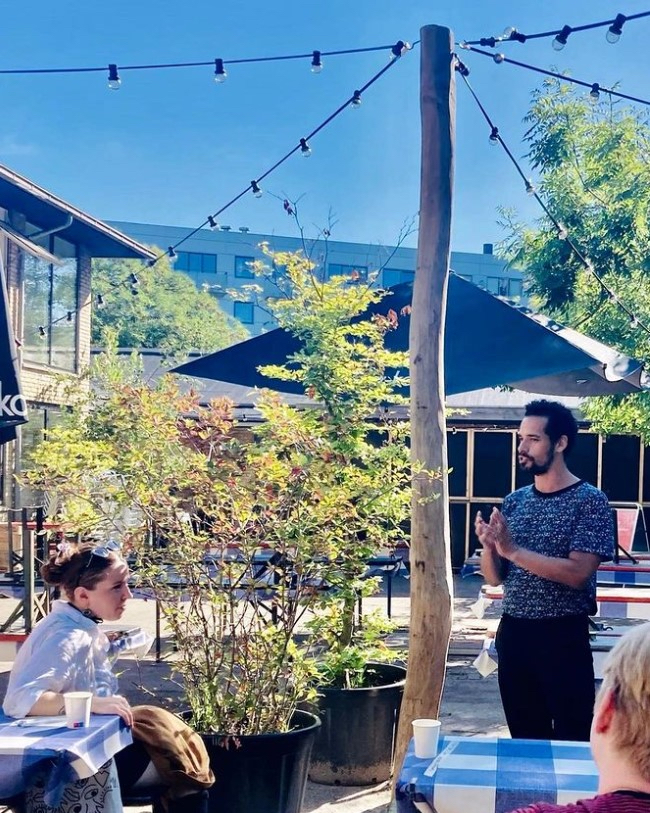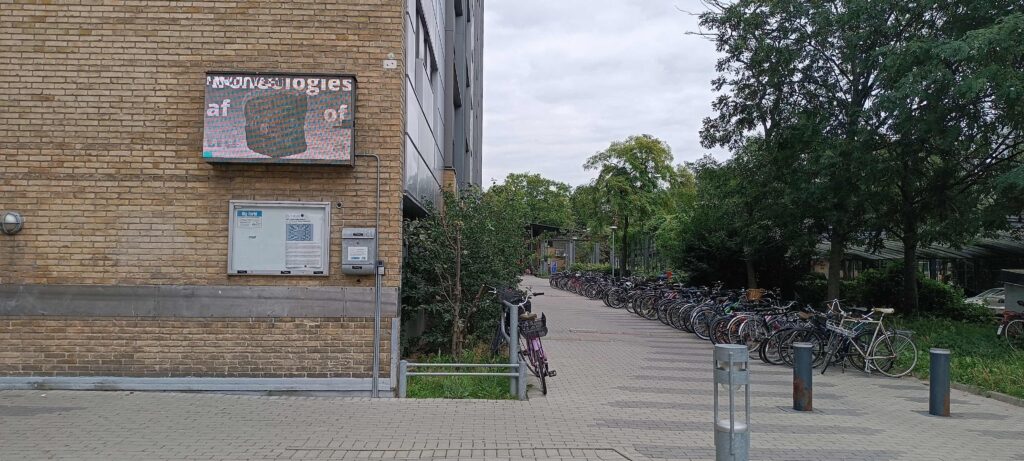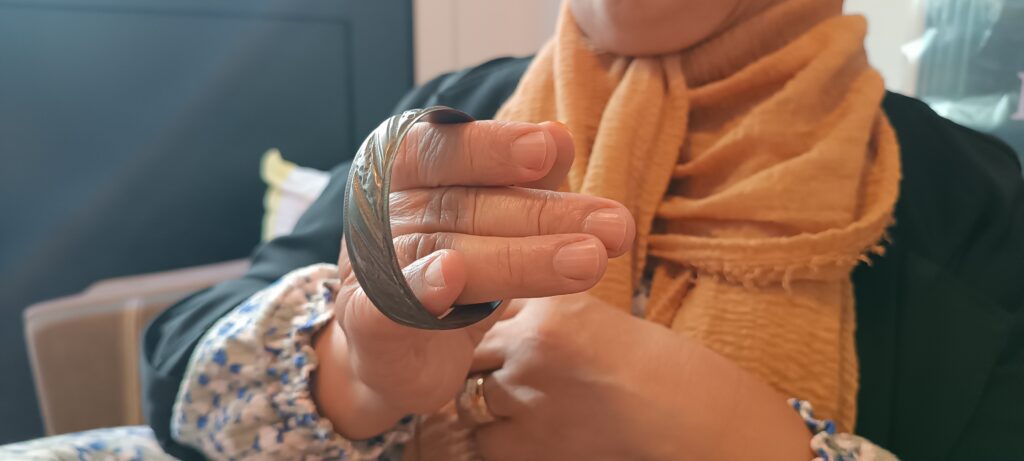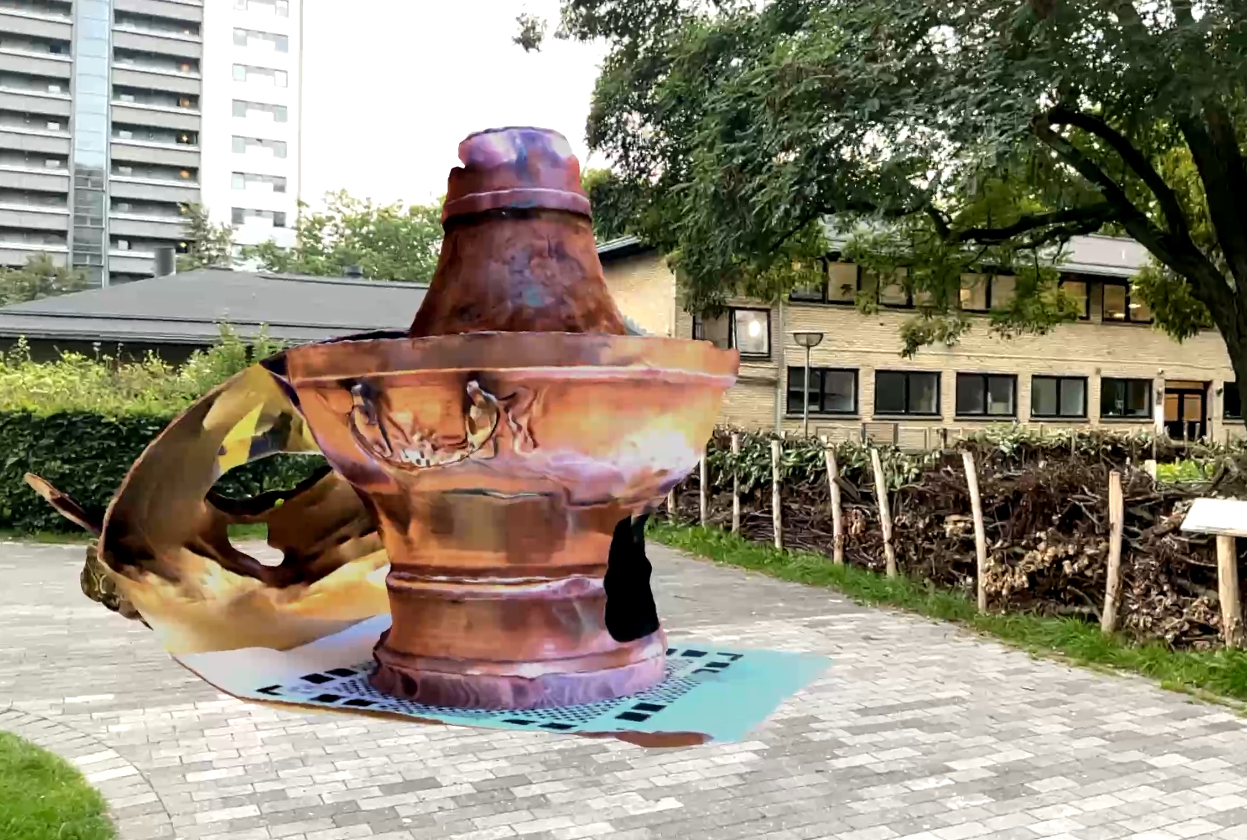In collaboration with the art platform Til Vaegs, the Brazilian artist, Rodrigo Andreolli, has invited people in São Paulo and Copenhagen to participate in a 3D scanning of objects. This archeology of memorabilia dealing with rewriting history, migration and marginalization leads to two public multimedia art exhibitions. bastard has met the artist for a talk about archiving, gentrification, choreography in public spaces, and how to engage people in taking action.
I met the Brazilian artist Rodrigo Andreolli at Lundtoftegade, an area in Copenhagen, where he has been working for several weeks in September in collaboration with the curatorial platform Til Vaegs. We sit in the indian summer sun coming in from the open door and talk about the project he is working on together with people living in both Copenhagen and São Paulo. Thus, the project could be called a twin city project or a project mirroring two places. The project addresses an archeology of memorabilia and is dealing with migration, trauma, and marginalization and ask whose stories are important in the writing of history.

But before we start to talk about this well reflected and empathic art project working in the public space, I ask Rodrigo about his artistic background, since the project includes relation between the body, space and art plus a multi-media exhibition and thus of course is echoing his various art practices.
Rodrigo Andreolli [RA]: I come from a theater background. I started mainly working with a theater company in São Paulo, called Teatro Oficina, which I still work with. The company has existed for over 60 years and has a strong political position in the country and has developed a specific language. It is kind of allegorical and carnivalesque and is also quite participatory; the separation between the audience and the actors is not very defined. This space invites people to move through, to displace within its structure, and often several hundreds of people are involved. It is not participatory as we know it, but more like people wanting to take action. Teatro Oficina also has a very strong connection to its surroundings and is rethinking the community around, rethinking the city. This is very central to my art practice. How to think around actions which can make people interested in engaging and taking action over things.
Teatro Oficina works with how theater can be part of shaping its surroundings, and therefore the building is open to its surroundings; a big window is transiting between inside and outside. The idea is that the theater is a street leading to the actual theater: the city. This is very much rooted in how I see artistic action. I see it as the possibility of exercising the public presence in a public space. It’s reclaiming the public spaces through our presences and actions. In this sense choreography also comes an important theme. I’m as an actor and director interested in the shifting of the theater’s different elements, from the power of presence of bodies, light, sound, etc, to create space.
And you also relate to dance and choreography, right?
Yes, I’m also aware of the importance of the body in developing things, so dancing and the thought of choreography is also part of my practice, The study of presence but also dance has to do with building a space, to refresh our ideas of spaces connected to movement. I’m interested in all this connected to choreography, and how we organize space and actions in space. How do we organize our bodies in the living space and time?
In 2011, I started a project in collaboration with Teatro Oficina called Terreyro Coreográfico. The project was dealing directly with choreography in public spaces. It was connected to a large portion of the lands surrounding the Teatro Oficina that had been bought by a big media company, which demolished most of the houses in the plots and wanted to build a shopping mall, at first, and currently three high apartment buildings instead. Because of the history of the neighbourhood with different migratory backgrounds from different parts of the country and many immigrants and a lot of culture and theaters, it is a very multicultural and diverse area. It has street life with family business, and such a project with implementing large scale construction would definitely change the profile of the area. Part of the work of the theater has thus been to reflect on the impacts of the change of the area, and it has actually managed to avoid this shopping mall and these other predatory projects for the past 40 years, even though they are up against big money.
This choreographic project Terreyro Coreográfico , started in 2014, worked with this. How do we claim the space around the Teatro Oficina? And how do we support this area in a city, which is build, with such density? There are almost no parks, no open areas. Maybe it’s better to integrate the human scale and take the ecological issues we are discussing now a days into account and think about how we can balance out the city by engaging projects that resonate the situated narratives of the place, not only profit-oriented goals.
And how did you work with these matters in the choreographic project?
We were a group of people from different backgrounds, theater makers, architects, philosophers, urbanists. We were doing actions in the surroundings, and we were taking public spaces. There is this bridge (like the bridge here at Lundtoftegade), which was also build in the 60´s and 70s, and there is this space underneath it, which is a public space, but which was closed or just became a deserted space for many years. So, we claimed the permission to use this space for temporary actions connected to culture and art. Slowly, we started to open this space, and the community started to come and evolve actions; dance classes, cleaning the space and taking care of the gardens in the area. We were thinking about making actions people wanted to take part of. The actions were about listening to the space; what are the stories and potentials of the space? And construct and build small temporary objects or actions that could meake the space be even more public and generate more access. It was very successful and intense and gave us a lot of tools to work with. This project is very important and fundamental to how I’m thinking. This relation between choreography, art, and the city.

And would you please tell a bit about the project you are working on in collaboration with Til Vaegs now in Lundtoftegade and Bairro do Bixiga?
Yes, I ask people here in Lundtoftegade to show me objects they choose from their homes and ask them to tell me the stories of their objects. And then we make 3D scanning of the objects and make images of them. The idea is to set up an exhibition in the coming year, so it’s linked with memories through the conversation. We get to know a little bit of where people in the area are coming from, their life stories, and why is the chosen object important. It gives an idea of the diversity of the stories that exist in this place, and that the stories are also part of the place, which they care about. The project is still ongoing, so I don’t know the final format yet, but I have ideas of virtual sculptures and narratives you can maybe read or hear.

You will be able to sense the diversities and get an idea of the piles of stories here and different relations to the space. This is one part of the project, but there is also thinking of the urban scale around. What has been happening here? The transformation with the opening of the river and the construction of the park in the area; the whole Lundtoftegade area is also being pushed towards gentrification. How can we be careful, and how can we approach this? It’s somehow connected to the area in São Paulo, where we are now at the point of trying to align the different public spheres and the government and get the owner of the land around the theater to agree to make it into a public park, Parque do Rio Bixiga.
The project is also concerned about a city, that has destroyed water stream for the past hundreds of years, can recuperate and incorporate the bodies of the water i again. Parque do Rio Bixiga , besides being a project is a movement of rethinking the city on a different level. It is of course a huge project, but it can be a model of a new understanding of the city. We must think about, what is it to be a city, to be able to breathe and have quality time and where are the spaces we will be able to meet?
Yes, because it’s a mirroring project, the two areas in São Paulo and Copenhagen are mirroring each other. Could you maybe elaborate on that?
One layer is the geological similarities. The two areas have water bodies and despite two different contexts economically and historically, there is this similarity pointing to the construction of the highways in both places in the 60s and 70s, privileging cars and transforming the areas. They created public spaces that are kind of deserted, and where it is as if people are afraid, zones put in the shade. It’s literally in the shade because it’s under the highway and there is not much apparent life activity. Those kinds of spaces are usually used as parking cars or accumulating trash.
Here of course there have been projects trying to transform it and the same is happening in São Paulo. These highway constructions have also divided and cut the city creating big urban scars. São Paulo did not become a big city until the beginning of the 20th Century. Before that, It was still like a village, composed of many farms, owned by few owners, remnants of colonial activities. The area which is the neighbourhood of Bixiga, used to be an area hosting indigenous communities and formerly enslaved people, forming communities by the margins of many water streams and rivers in the region, including Rio Bixiga. And throughout the 20th century a lot of immigrants from Europe, and people from the Northern parts of the country, running away from wars, severe ecological and economic conditions, would also find a home in Bixiga.

You still see that, the Italian cantinas and restaurants serving typical food from the northern parts of the country. It’s a very mixed and alive area with cultural activities, many theaters, and when the construction of Minhocão, the highway project, started, it cut the area and the city in two. It created an invisible wall, A lot of the work now is to try to reconnect these parts.
In Lundtoftegade I feel it’s still an area with a lot of stigmatizations; an area that has hosted a lot of immigrants and people with low income, who did not have the possibility of living elsewhere in the city. And now there is a shift in the profile. There are similar forces in these areas, even though they are very different. So, the mirroring layers are the opening of a river, the treatment of bodies of water, the history of the people, and how people carry stigmas around spaces, and to understand how we are the bodies creating public spaces. We are thus also trying to think about how it can be interesting to both sides and look at each other’s projects. How art can be an activistic part without being just another gentrification force.
Yes, it is of course also about sharing knowledge?
Yes, this is what we are going towards. The idea is, that I present the projects in both places, and we are still figuring out how to create the bridges. Now one step is to get in contact, collect stories and scan some objects, and I will do the same in São Paulo. And the exhibition will merge the objects and cross the stories, because at the end of the day the struggles are different, but there are many possible relations through the space, to propose reflections that can be generative. There is the similarity of how we care about things, space, and memories. There is a connection and affection to the materials and spaces of the world that helps us understand our living in this world. Makes us understand our limits and stories and connections.

Are there some examples of stories and objects you can share?
A cooking pot was presented to me by a person who came here 20 years ago. This cooking pot belonged to her grandmother, and you can see when this person is dealing with this object, how careful she is about it. And the object is used nowadays when she cooks to her friends she made here, so it’s about the past, gathering memories but also new connections. This was very beautiful and touching.
And another person, again not from Denmark, chose a potato plant; not a personal object, but the story related to it was about, remembering who taught her to cultivate this plant, many years ago, in another part of the world , and then making that knowledge present here. Other objects are connected to people they have lost and are maybe gifts. Many are memories of women to women, mother to daughter, grandchild to grandmother. A lot was about care work and about their choices. It seems very empowering to me to be able to retell such stories and see how they make themselves present in people’s lives here.
Do you think the stories and objects will be very different in São Paulo?
It is of course my speculation, but I think at the end of the day, as I said the stories can be very different, but the feelings may be similar. I’m sure there will be also object given from grandparents e.g. But I feel the way the stories will be told will be different. the narratives can be quite confusing tbecause so many of these stories were oppressed and erased, some of them only remain in the oral narratives, as intimate traces of stories told. A lot of people only know about one or two generations back. It has been a lot about the archeology of the space; the objects, the stories, the relations etc.

Yes, the project involves a criticism of the classical institutional archive, telling alternative and erased stories and archiving alternative objects, what are your thoughts on the archive?
Maybe we should think about the archive as a practice. The scars on my body are an archive, so it’s a practice of how I read things, we are archives. We are the accumulation of our lived experiences.
But I’m also interested in the aspects of figuring the future, how we can also use memory and these objects of the past to think about the future. This idea of prefiguration and forming the future is important in the area around the theater in São Paulo. It is an important exercise because it can be used in engaging communities in thinking through objects, through public encounters, through action and in performative ways. Not only what exists, but what we can envision. There is a gaze both into the past, and into the future when we imagine spaces, and objects, as emerging other ways of living. But we got to do it together, acknowledging differences, deeply listening to the spaces and always in contact with the ground. That is the following step.
